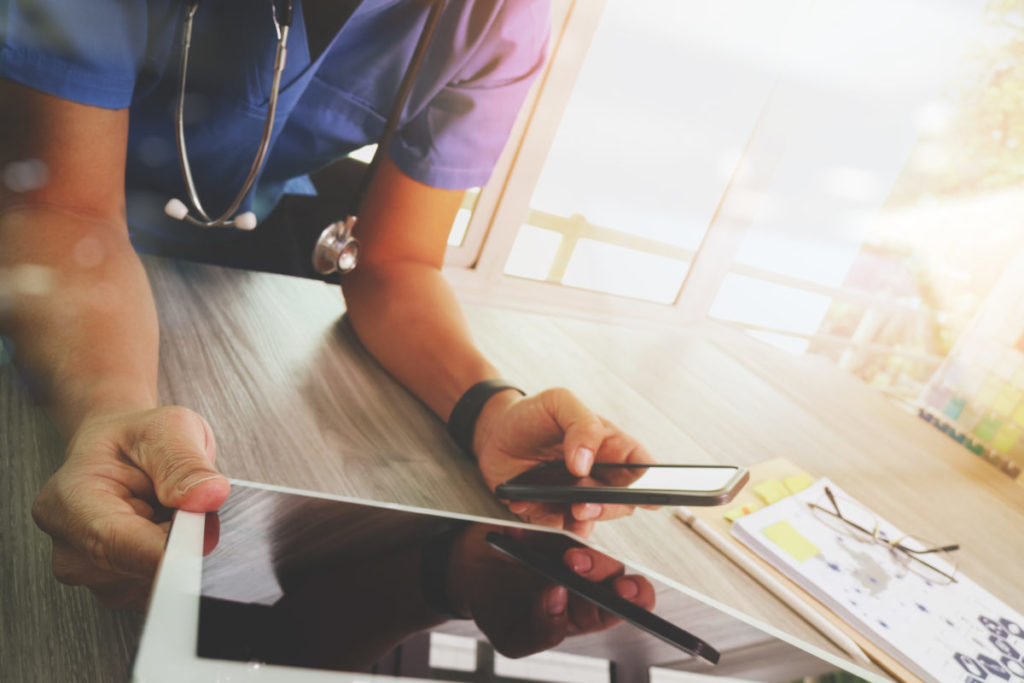The novel coronavirus — COVID-19 — is an emerging, uncertain, global issue. While this uncertainty is frightening, there are many ways we can help reduce risks to protect ourselves and each other.
To start, familiarize and re-familiarize yourself with the CDC’s guide on “How to Protect Yourself.” This concise, evidence-based document reviews how the disease spreads, ways to avoid getting sick, and steps to avoid spreading illness with others. These simple, doable measures are vital to limiting the spread of this virus.
The CDC has also released guidance on how practice team members should handle suspected cases.
Technology Is Our Ally
Beyond prevention measures, technology is another ally in fighting this disease. For example, athenahealth has released global screening tools based on the CDC’s latest guidance to assist healthcare providers with the evaluation of patients presenting with fever and acute respiratory illness. One such example is a social-history template containing the seven CDC screening questions. Another example is an order set that includes CDC-recommended diagnostic tests and specimens for collection.
Technology can also help connect with patients and ease their fears and anxieties. For example, you can send a patient email or add a website banner linking to helpful information and resources. Similarly, you can share updates and recommendations on social media if you have an active presence.
The Time for Telehealth
The Centers for Medicare and Medicaid Services (CMS) recently relaxed telehealth restrictions “so that beneficiaries can receive a wider range of services from their doctors without having to travel to a healthcare facility.”
To preserve social distancing, providers can now use telehealth to see patients for any diagnosis or treatment, not just COVID-19. Virtual care can be used during this time to help triage sick patients and keep those with symptoms out of already-crowded medical offices. In some areas, virtual immediate care is available to help physicians and advanced practice practitioners to triage and address urgent issues.
Take Care of Yourself
While we’re doing all we can to care for our patients, it’s essential we protect our own physical and mental well-being as well. Doing so allows us to be more present and more helpful to our patients. Given how widespread burnout is among medical professionals, we must remain vigilant and monitor ourselves. The good news is that there are tools to help us.
Headspace is offering healthcare professionals free access to their premium services, which include mindfulness meditations, breathing exercises, and other programs to destress. All you have to do is put in your National Provider Identifier (NPI) number.
Many insurers also offer an Employee Assistance Program (EAP) to provide counseling services for work-related or personal difficulties. Similarly, teletherapy and virtual wellness visits are excellent ways to consult with a mental health professional from the comfort and safety of your own home.
Finally, I want to share these hotlines that are essential in times of crisis.
- Suicide Prevention Lifeline: 1.800.273.8255
- Substance Abuse and Mental Health Services Administration: 1.800.662.4357
- National Institute of Mental Health: 866.615.6464
- National Alliance on Mental Illness: 1.800.950.6264
Please stay tuned for updates; this case is changing day by day, and we’re committed to doing all that we can to support our providers and their patients during this challenging time.










Related Articles
How to Keep Your Patients From Skipping Mammograms
Kristin Schraa, MD, with Virginia Women’s Center shares how women’s health providers can encourage patients ...
3 Ways Healthcare Can Integrate Behavioral Health and Primary Care
Integrating behavioral health with primary care can lead to better patient outcomes — but how ...
How Can Physicians Support Postpartum Mental Health?
On average, 13 percent of mothers in the United States will develop symptoms of postpartum ...
Engaging Patients in Annual Mammograms
Studies show that a little over 66 percent of women aged 40 and older get ...
What Do Medicare-Aged Patients Want in Their Healthcare?
Within the next 20 years, 20 percent of Americans will be 65 or older. It ...
How Health Systems Grow Stronger With Privia Health
Discover how we helped Health First upgrade technology, align physicians, and accelerate toward value-based care. ...